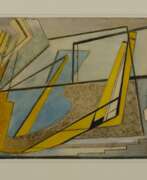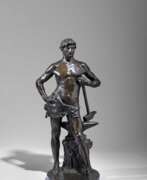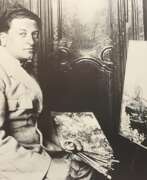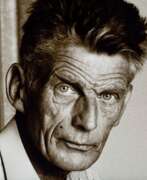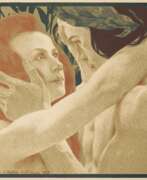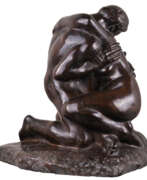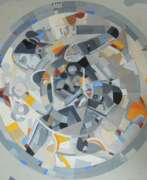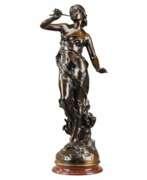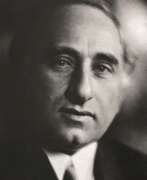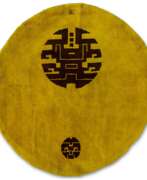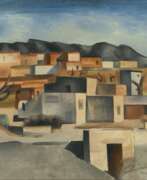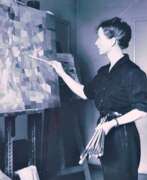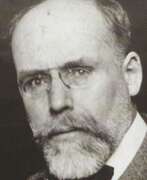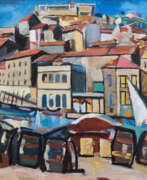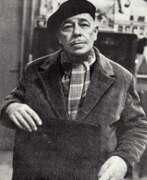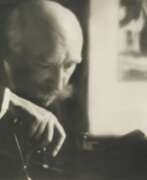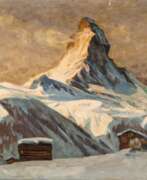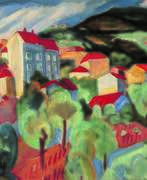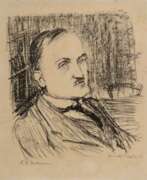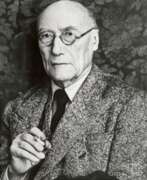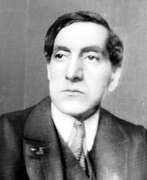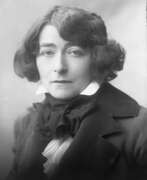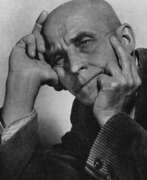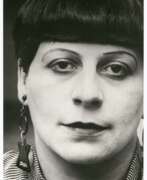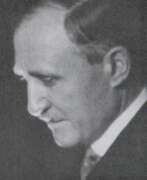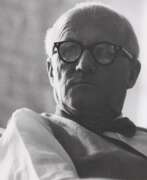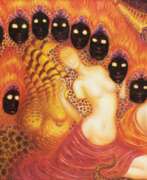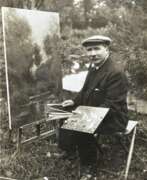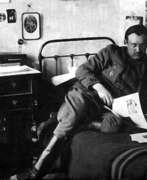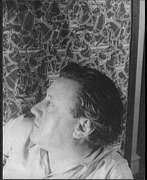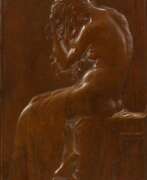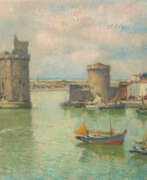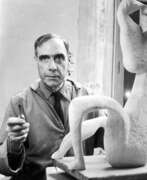France Modern art
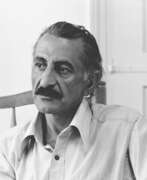

Shafic Abboud, also known as Chafic Abboud, was a renowned Lebanese painter whose artistic journey led him from Beirut to the vibrant art scene of Paris in 1947. Embracing the modernist and abstract movements of the mid 20th century, Abboud honed his skills at the ateliers of prominent artists like Jean Metzinger and Fernand Léger. This exposure influenced his transition from figurative and landscape painting to his signature colorful personal abstractions. Despite his years in France, Abboud remained deeply connected to his oriental roots, drawing inspiration from oral storytelling and Byzantine icons.
Abboud´s creativity extended to ceramics, terracotta, carpets, and lithography. His exceptional talent garnered global recognition, with exhibitions in prestigious venues like Doha's Mathaf and Paris's Institut du Monde Arabe. In May 2012, Beirut Exhibition Center celebrated his artistic legacy in a comprehensive exhibition.
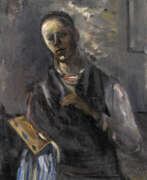

Alfred Aberdam was a Polish painter associated with the School of Paris, known for his participation in the artistic movements of the early 20th century. Born in Lviv, then part of the Austro-Hungarian Empire, Aberdam's journey in the arts began with his studies at the Munich Academy in 1911. His life and work were marked by significant historical events, including imprisonment during World War I and an active period in Poland's art scene before settling in Paris. Aberdam's contributions are remembered through his numerous exhibitions, including solo showcases in Paris, London, and Tel-Aviv, as well as posthumous retrospectives like the one in Geneva's Petit Palais in 1970.
Aberdam's works reflect the cultural dynamism of the School of Paris, capturing a confluence of influences that characterized the European art scene. Despite being somewhat lesser-known, his paintings have been traded at auction, reflecting a continued interest and recognition of his artistic legacy. His art remains an important part of the narrative of Jewish painters in Paris from 1905 to 1939, contributing to our understanding of the era's artistic diversity.
For collectors and experts in art and antiques, Aberdam's work embodies the intricate history and cultural exchanges of the early 20th century European art world. His paintings not only represent his individual talent but also tell the story of the times in which he lived, worked, and created. Understanding Aberdam's art is a journey through the cultural melting pot that was Paris during a pivotal period in modern art history.
For those interested in exploring the legacy and works of Alfred Aberdam further, or seeking to keep abreast of new product sales and auction events related to his work, subscribing for updates is invaluable. Stay informed on the latest developments and opportunities to appreciate or acquire pieces by this notable artist. Subscribe now to ensure you are alerted to new sales and auction events featuring the esteemed Alfred Aberdam.
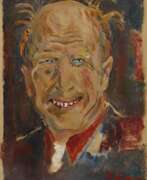

Lucien Adrion was a French post-impressionist painter, draughtsman and printmaker. He is known for his depictions of the French countryside and beaches, as well as of Parisian life, including landscapes, still lifes, figures and landmarks.
Throughout his career, Adrion exhibited his work at the Salons in Paris, where he was praised for his ability to capture the movement and transience of city life.
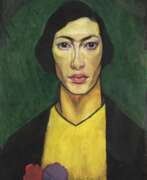

Nathan Isaiovych Altman (Russian: Натан Исаевич Альтман), a Ukrainian-born Russian and Soviet avant-garde artist, made significant contributions to Cubism, stage design, and book illustration. Born on December 22, 1889, in Vinnytsia, Ukraine, Altman's early education took place at the Odessa School of Art, followed by further studies at the Maria Vasilyeva Free Russian Academy in Paris. His diverse artistic talent extended across painting, sculpture, graphic art, and theatrical and cinema design, reflecting the dynamic spirit of the avant-garde movement.
Altman's work is recognized for its innovative approach to Cubism and for integrating avant-garde principles with traditional Jewish themes. This blend is evident in his Jewish graphic arts and his involvement in designing stage sets for the Habimah Theatre and the Jewish State Theatre in Moscow from 1920 to 1928. A notable period in his career was his participation in the Exposition Internationale des Arts Decoratifs et Industriels Modernes in Paris in 1925, showcasing his breadth in arts and design alongside contemporaries such as Aleksandra Ekster and Sonia Delaunay-Terk.
Altman's legacy is preserved in several prestigious collections, including the Museum of Russian Art in Erevan, Armenia, where his mixed technique works like "Still Life" are housed. His pieces reflect the avant-garde's fascination with abstract forms and bold experiments with color and composition. The Russian Museum's collection of Altman's work further highlights his versatility, featuring his self-portraits, the iconic "Portrait of Anna Akhmatova", and innovative designs for theatrical productions.
For collectors and experts in art and antiques, Altman's oeuvre offers a unique insight into the evolution of avant-garde art in the early 20th century. His works not only encapsulate the revolutionary spirit of the time but also embody the rich cultural interplay between Russian and Jewish artistic traditions.
To stay updated on Nathan Isaiovych Altman's art and to learn about new sales and auction events related to his work, signing up for updates is highly recommended. This subscription ensures you remain informed about opportunities to engage with the legacy of a pivotal figure in the avant-garde movement.
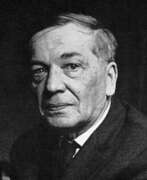

Mikhail Fedorovich Andrienko-Nechytailo (Russian: Михаил Фёдорович Андриенко-Нечитайло) was a Russian artist known for his contributions to the avant-garde movement. Born in 1894, he became renowned for his innovative approach to painting, stage design, and illustration. Andrienko-Nechytailo’s work is celebrated for its unique blend of Constructivism and Cubism, which set him apart from his contemporaries.
One of his special features was his ability to combine geometric forms with a vibrant color palette, creating visually striking compositions that challenged traditional artistic conventions. His works often explored themes of abstraction and the intersection of art and technology. His notable pieces are housed in prestigious collections, including the Tretyakov Gallery in Moscow and the Russian Museum in Saint Petersburg.
Collectors and art experts admire Andrienko-Nechytailo for his visionary approach and lasting impact on modern art. His legacy continues to influence contemporary artists and is a testament to his skill and creativity.
Sign up for updates on new product sales and auction events related to Mikhail Fedorovich Andrienko-Nechytailo. Stay informed about opportunities to add his remarkable works to your collection.
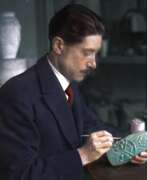

Gabriel Argy-Rousseau, born Joseph Gabriel Rousseau, was a French sculptor, ceramicist and master glassblower who contributed to the rediscovery of pâte de verre as the primary art of glass in the early twentieth century.
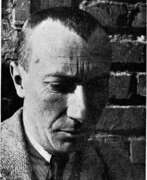

Jean Arp, born Hans Peter Wilhelm Arp, was a German and French poet, painter, graphic artist and sculptor. one of the founders of the Dada movement in Zurich.
Arp used abstract forms in his work and experimented with different materials such as wood, metal and stone. He was also known for his poetic works, in which he applied a method of randomly selecting words, called the "clutter method". Arp believed that this method helped him express his thoughts more precisely and originally. Arp's influence on the arts is still significant today.
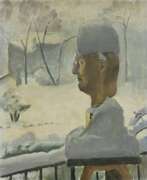

Maurice Paul Jean Asselin was a French painter, watercolourist, printmaker, lithographer, engraver and illustrator, associated with the School of Paris. He is best known for still lifes and nudes. Other recurring themes in his work are motherhood, and the landscapes and seascapes of Brittany. He also worked as a book illustrator, particularly in the 1920s. His personal style was characterised by subdued colours, sensitive brushwork and a strong sense of composition and design.
He was awarded the rank of Officier de la Légion d'honneur in 1939.
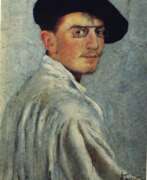

Leon Bakst (Russian: Лев Самойлович Бакст) was a prominent Russian painter and stage designer, celebrated for his innovative contributions to the world of art and theater. Born in the late 19th century, Bakst became a central figure in the cultural renaissance that swept through Russia and Europe, leaving an indelible mark on the visual and performing arts.
Bakst's work is distinguished by its rich use of color, intricate patterns, and imaginative compositions, which brought to life the exotic and often fantastical themes of the ballets and operas for which he designed. His association with the Ballets Russes, a groundbreaking ballet company that performed across Europe and America, solidified his reputation as a visionary artist. The costumes and sets he created for productions like "The Firebird" and "Scheherazade" were celebrated for their creativity and exoticism, influencing not only the world of theater but also fashion and interior design.
His art extends beyond the stage, with paintings and illustrations that capture the same vibrancy and innovation found in his theatrical work. Museums and galleries around the world, including the State Russian Museum in St. Petersburg and the Metropolitan Museum of Art in New York, house his works, allowing art lovers to experience the magic of Bakst's creations.
For collectors and experts in art and antiques, Leon Bakst's work offers a unique glimpse into a transformative period of cultural history, where the boundaries of art and performance were reimagined. His legacy continues to inspire and captivate, making his pieces highly sought after in the art world.
We invite enthusiasts and collectors to sign up for updates on new product sales and auction events related to Leon Bakst. This subscription ensures you remain informed about opportunities to acquire pieces connected to this extraordinary artist's legacy, without any overbearing commitments. Join us in celebrating the enduring impact of Leon Bakst's art and design.
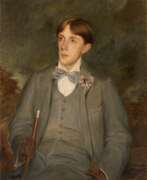

Aubrey Vincent Beardsley was an English artist and illustrator, whose brief yet impactful career left an indelible mark on the art world. Born in Brighton, England, in 1872, Beardsley's work was instrumental in the development of the Art Nouveau movement, and he is often remembered for his bold, innovative illustrations that challenged Victorian sensibilities with their erotic and often grotesque imagery.
Beardsley's artistic journey was characterized by his unique ability to blend influences from Japanese woodcuts with the aesthetic of the English Art Nouveau movement. His illustrations are distinguished by their stark contrasts of black and white, intricate details, and the absence of middle tones, creating a dramatic and unmistakable style. He was particularly known for his illustrations for the limited edition of "Le Morte D'Arthur," which were celebrated for their elaborate detail and pre-Raphaelite influences, despite their sometimes grotesque details. This work, along with his contributions to "The Yellow Book" and illustrations for Oscar Wilde's "Salome," showcased his talent for capturing the decadent and the macabre, earning him both acclaim and controversy (Wikipedia, The Collector).
Beardsley's career, though short-lived due to his untimely death at the age of 25 from tuberculosis, was marked by significant contributions to various publications, including "The Studio" and "The Savoy," which he co-founded. His work for "The Yellow Book," where he served as art editor, was particularly influential. The magazine, using the latest image-reproduction technology of the time, allowed Beardsley to make dramatic use of black and white space, reflecting his vision of modern life and aesthetics (V&A Museum).
Despite facing health challenges and controversies, including being dismissed from "The Yellow Book" during the scandal surrounding Oscar Wilde's arrest, Beardsley continued to work on projects that pushed the boundaries of conventional morality and art. His illustrations for works like Aristophanes' "Lysistrata" and his retelling of the Tannhäuser legend are testament to his enduring creative spirit and his willingness to explore themes of decadence, sexuality, and the grotesque.
Beardsley's legacy extends beyond his death, influencing not only the Art Nouveau movement but also future generations of artists and illustrators. His work continues to be celebrated for its daring originality and its challenge to the norms of his time. The Victoria and Albert Museum, among others, has celebrated Beardsley's contributions to art and culture, showcasing his ability to intertwine the beautiful and the grotesque in ways that remain provocative and engaging to this day.
For collectors and experts in art and antiques, Beardsley's work offers a fascinating glimpse into the aesthetic and cultural shifts of the late 19th century. His influence on poster art, illustration, and the broader Art Nouveau movement underlines the significant impact he had during his brief career. To stay updated on sales and auction events related to Aubrey Vincent Beardsley's work, signing up for updates can provide exclusive access to the continuing legacy of this remarkable artist.


Alexandre Nikolayevich Benois (Russian: Алекса́ндр Никола́евич Бенуа́) was a distinguished Russian artist, art critic, and historian, celebrated for his pivotal role in the art world, particularly in painting and stage design. Born into a family deeply embedded in the cultural fabric of Russia, Benois was instrumental in the development of the Russian artistic movement at the turn of the 20th century. His contributions to art and culture extend beyond his vivid paintings; he was a founding member of the World of Art (Mir iskusstva), a significant art movement and magazine that sought to elevate Russian artistry on the global stage.
Benois' work is notable for its intricate detailing, vibrant use of color, and the ability to convey deep narratives within each piece. His designs for ballets such as "Petrushka" and "The Sleeping Beauty" remain iconic, showcasing his mastery over the fusion of visual art and performance. This synthesis not only enhanced the ballets’ visual appeal but also deepened the audience's engagement with the narrative. Museums and galleries around the world, including the Russian Museum in St. Petersburg and the Tretyakov Gallery in Moscow, house his works, underscoring his global recognition and the enduring appeal of his artistic vision.
For collectors and experts in art and antiques, Benois' oeuvre represents a fascinating exploration of early 20th-century Russian culture, art, and the avant-garde movement. His ability to blend traditional Russian themes with the modernist trends of his time makes his work a valuable study in the evolution of modern art. Those interested in the rich tapestry of Russian cultural history and the interplay between art and performance will find Benois' contributions invaluable.
To stay informed about new discoveries, sales, and auction events related to Alexandre Nikolayevich Benois, we encourage you to sign up for updates. This subscription is tailored specifically for enthusiasts eager to deepen their appreciation and understanding of Benois' legacy, ensuring you're the first to know about opportunities to acquire pieces connected to this luminary of Russian art.
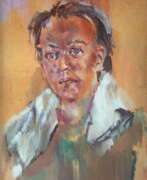

Christian Bérard, also known as Bebè, was a French artist, fashion illustrator and designer.
Bérard and his lover Boris Kochno, who worked for the Ballets Russes and was also co-founder of the Ballets des Champs-Elysées, were one of the most prominent openly homosexual couples in French theater during the 1930s and 1940s.
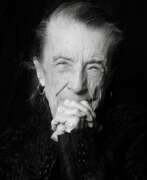

Louise Joséphine Bourgeois was a French-American artist. Although she is best known for her large-scale sculpture and installation art, Bourgeois was also a prolific painter and printmaker. She explored a variety of themes over the course of her long career including domesticity and the family, sexuality and the body, as well as death and the unconscious. These themes connect to events from her childhood which she considered to be a therapeutic process. Although Bourgeois exhibited with the Abstract Expressionists and her work has much in common with Surrealism and Feminist art, she was not formally affiliated with a particular artistic movement.
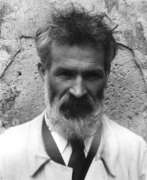

Constantin Brâncuși was a Romanian sculptor, painter, and photographer who made his career mainly in France, becoming one of the pivotal figures of modern sculpture and a pioneer of modernism. Born in 1876 in Hobița, Romania, Brâncuși displayed a talent for carving from a young age, a skill honed during his early life as a shepherd in the Carpathian Mountains. His work evolved from traditional forms to groundbreaking abstract sculptures that sought to capture the essence rather than the literal representation of his subjects.
After moving to Paris in 1904, Brâncuși's unique style began to take shape. He worked briefly in the studio of Auguste Rodin, but soon left to pursue his own vision, stating that "Nothing can grow under big trees." This decision marked the beginning of his pursuit to distill forms to their simplest essence, a philosophy that would define his career. Brâncuși's sculptures, such as "The Kiss" and "Bird in Space," are celebrated for their smooth, simplified forms that evoke the core of the subject matter with minimal detail. His work in wood, bronze, and marble often carried a serene, timeless quality, blending modernist aesthetics with a touch of his Romanian heritage.
Brâncuși's contributions to art were not limited to sculpture. He was also an accomplished photographer, using his camera to capture the spatial relationships and compositions of his studio and sculptures, an extension of his artistic vision. His works are held in high regard worldwide and are featured in prominent collections, such as the Museum of Modern Art in New York and the Tate in the United Kingdom.
The legal battle over "Bird in Space" in 1927 highlighted the challenges Brâncuși faced in having his work recognized as art by traditional standards. This case, which eventually ruled in his favor, established a precedent for modern art's recognition beyond traditional forms and representations.
For art collectors and experts, Brâncuși's oeuvre represents a bridge between the tactile craftsmanship of earlier periods and the conceptual, form-driven concerns of modern art. His legacy is a testament to the power of innovation, vision, and the enduring appeal of simplicity in form.
For those interested in the evolution of sculpture and the role of art in transcending cultural and temporal boundaries, Constantin Brâncuși's work offers profound insights. We invite you to sign up for updates on new product sales and auction events related to Brâncuși's work, ensuring you stay informed about opportunities to engage with the legacy of this pioneering artist.


Yves Brayer was a French painter and lithographer known for his landscapes, portraits and still lifes.
Brayer studied at the École Nationale Supérieure des Beaux-Arts in Paris and then in Rome. He was influenced by classical art and inspired by Mediterranean landscapes, which he often depicted in his paintings. He was also interested in the culture of ancient Greece, which influenced his work.
Brye's early work was inspired by the Cubist and Surrealist movements. He was a founding member of the Paris School, a group of artists working in the French capital in the mid-twentieth century. He was also a member of the French Academy of Fine Arts and a Knight of the Legion of Honour.
Bryeux's work has been exhibited in prestigious galleries and museums around the world, including the Louvre in Paris, the Museum of Modern Art in New York and the National Museum of Western Art in Tokyo. His paintings are in many private collections.
Over the course of his career, Brye has received numerous awards and honours, including the Grand Prix de Rome and the Prix de l'Institut de France. He is considered one of the most important French artists of the 20th century.


Osip Emmanuilovich Braz (Russian: Осип Эммануилович Браз) was a Russian-Jewish realist painter, celebrated for his adeptness in portraying the subtleties of human character and the serene beauty of landscapes. Born in Odessa in 1873, Braz embarked on his artistic journey at the Odessa Art School, later honing his craft in Munich under the guidance of Sandor Kholloshi and in St. Petersburg at the Academy of Arts, where he studied under the legendary Ilya Repin. His early works, marked by a series of compelling portraits, including those of eminent Russian cultural figures like Anton Chekhov, garnered him significant acclaim. Braz's portrait of Chekhov, commissioned by Pavel Tretyakov for the State Tretyakov Gallery, is particularly noted for being the only complete lifetime portrait of the writer.
Braz's contributions to art were not confined to portraiture alone; he also produced exquisite still lifes and landscapes, capturing the essence of his subjects with a delicacy and depth that reflected his mastery over the medium. His landscapes of France, Crimea, and Finland, inspired by his travels, exhibit a remarkable sense of place and mood, blending realism with an impressionistic sensitivity to light and color.
Throughout his career, Braz was deeply involved in the art community, participating in the World of Art exhibitions and influencing the artistic dialogue of his time. Despite facing adversity, including imprisonment and the confiscation of his art collections by Soviet authorities, Braz's legacy as a painter and collector endures. His works continue to be celebrated for their technical prowess and emotional depth, held in high esteem by collectors and experts alike.
For collectors and experts in art and antiques, Osip Emmanuilovich Braz's oeuvre offers a window into the soul of Russian realism and the broader currents of European art at the turn of the century. His life's work underscores the enduring power of art to capture the human condition and the natural world in all their complexity and beauty. Sign up for updates to stay informed about new product sales and auction events related to Osip Emmanuilovich Braz and delve deeper into the legacy of this remarkable artist.


Umberto Brunelleschi was an Italian artist. He studied at the Accademia delle Belle Arti in Florence and moved to Paris in 1900 with Ardengo Soffici where he soon established himself as a printer, book illustrator, set and costume designer.


Léon Georges Jean-Baptiste Carré was a French Orientalist painter and illustrator known for his contribution to the Fauvist movement.
Carré's style was characterized by bright colours and bold strokes. He sought to express his emotions and convey the essence of the subject through intense and unnatural colours. Carré's paintings often depicted landscapes, still lifes and portraits.
Léon Carré also experimented with other artistic movements such as Cubism and Post-Impressionism. This allowed him to develop a unique artistic language which combined elements of different currents.
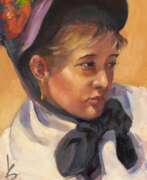

Mary Stevenson Cassatt was an influential American painter and printmaker known for her pivotal role in the Impressionist movement. Born on May 22, 1844, in Allegheny City, Pennsylvania, Cassatt spent much of her adult life in France, where she formed a significant professional relationship with Edgar Degas and exhibited with other Impressionists. Despite her family's initial reluctance, Cassatt pursued art from a young age, attending the Pennsylvania Academy of the Fine Arts at fifteen and later moving to Paris to continue her education under private tutors, including the renowned Jean-Léon Gérôme.
Cassatt's art mainly focused on women and children, encapsulating intimate moments with a profound sense of dignity and depth. Her works, such as "The Boating Party" and "Mother and Child," showcase her skill in portraying the nuanced interactions of everyday life. Cassatt's technique evolved from the light brushstrokes of early Impressionism to a more structured form, emphasizing solid figures and clear contours.
A prominent figure not just in art but also in art advocacy, Cassatt was instrumental in advising American collectors, including the Havemeyers, which helped enrich public and private American art collections significantly. Despite challenges related to her gender and later, her failing eyesight, Cassatt's contributions to art remain influential, reflecting her unique perspective and unyielding dedication to Impressionism.
For updates on exhibitions and sales related to Mary Stevenson Cassatt's works, consider signing up for our newsletter. This subscription will keep you informed about the latest auction events and product sales directly linked to Cassatt's enduring legacy.
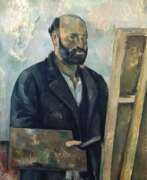

Paul Cézanne, a French Post-Impressionist painter, was pivotal in shaping the transition from 19th-century art to a new, revolutionary approach in the 20th century. His unique and exploratory brushstrokes, utilizing planes of color to form complex fields, made his work instantly recognizable and influential in the development of Cubism.
Cézanne’s early works, influenced by Romanticism and Realism, evolved into a groundbreaking artistic language. He challenged traditional perspective and academic art rules, focusing on objects' structural aspects and art's formal qualities. This approach led to a renewed emphasis on impressionistic color space and modulation principles.
His most notable works, like “Mont Sainte-Victoire,” “The Card Players,” and “The Bathers,” display his mastery in creating depth and dimension through color gradations. These paintings, initially met with skepticism, eventually cemented Cézanne’s reputation as a pioneering artist. His exhibitions, particularly the one-man show by dealer Ambroise Vollard in 1895, played a critical role in his recognition.
Cézanne’s impact on art history is profound, with greats like Henri Matisse and Pablo Picasso acknowledging him as a significant influence. His exploration of geometric forms and innovative use of light and color laid the groundwork for subsequent movements, particularly Cubism.
For collectors and art experts, Cézanne's works are more than just paintings; they are pivotal chapters in the narrative of modern art. His creations, bridging Impressionism and Cubism, continue to inspire and challenge contemporary artists.
To stay updated on new product sales and auction events related to Paul Cézanne, sign up for our updates. This subscription ensures you remain informed about the latest developments in the world of this revolutionary artist.
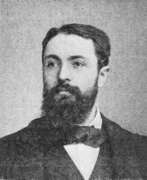

Paul Émile Chabas was a French painter and illustrator and member of the Académie des Beaux-Arts.
His preferred subject was a nude young woman in a natural setting. He was considered to be one of Europe's greatest painters of nudes.
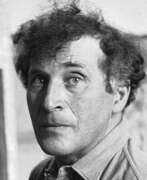

Marc Chagall (Russian: Марк Заха́рович Шага́л), born Moishe Shagal in 1887 near Vitebsk, Belarus (then part of the Russian Empire), was a Belarusian and French artist celebrated for his pivotal role in the avant-garde movement and his unique integration of Eastern European Jewish culture into modern art. His contributions spanned several artistic formats including painting, stained glass, stage sets, ceramics, tapestries, and fine art prints. Chagall's early modernist tendencies were enriched by his experiences across Saint Petersburg, Paris, and Berlin before World War I, leading to a distinctive style that melded Cubism, Symbolism, and Fauvism with his Jewish heritage.
Chagall's work is recognized for its emotional depth, often exploring themes of love, memory, and Jewish folklore through vibrant colors and dreamlike imagery. Notably, art critic Robert Hughes described him as "the quintessential Jewish artist of the twentieth century," a sentiment echoed by art historian Michael J. Lewis who regarded Chagall as a significant figure within European modernism and as the world's preeminent Jewish artist of his time.
Among Chagall's famed contributions are his stained-glass windows for the cathedrals of Reims and Metz, the UN, and the Jerusalem Windows in Israel. His monumental paintings include parts of the ceiling of the Paris Opéra and works that explore biblical themes, a hallmark of his oeuvre that underscores his enduring engagement with spiritual and religious motifs.
For art collectors and antiques experts, Chagall's works are notable not only for their artistic innovation but also for their rich cultural and historical significance. His art is housed in many prestigious museums worldwide, including the Marc Chagall National Museum in Nice, France, which focuses on his works inspired by religion and houses the series of paintings illustrating the biblical message.
For those interested in exploring Chagall's legacy and the vibrant intersection of culture, art, and history his work represents, signing up for updates on new product sales and auction events related to Marc Chagall can provide invaluable insights and opportunities. This is an invitation to engage more deeply with the world of art and culture that Chagall so uniquely encapsulated in his work.
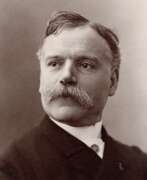

Jules Chéret, a French artist and lithographer, revolutionized the world of advertising and poster art in the late 19th and early 20th centuries. Born in Paris in 1836, Chéret's innovative techniques and vibrant style earned him the title of "the father of the modern poster," a distinction that highlights his significant contributions to the graphic arts. His work was greatly influenced by the Rococo movement, drawing inspiration from artists like Jean-Honoré Fragonard and Antoine Watteau, which is evident in his joyful and lively representations of women, known as 'Chérettes.' These figures broke away from traditional depictions, celebrating femininity with elegance and a sense of freedom, thereby contributing to a more open atmosphere in Parisian society.
Chéret's mastery of lithography, a printing technique he believed would dominate over traditional letterpress, allowed for the production of colorful and dynamic posters. His approach to lithography was revolutionary; he simplified the chromolithographic process by using three primary colors and treated the limestone with a painterly technique that included animated brush lines and soft washes. This enabled him to produce posters that were not only advertisements but also highly regarded pieces of art. His first major commission came in 1858 for Jacques Offenbach's "Orpheus in the Underworld," marking the beginning of a prolific career that would redefine poster art.
Chéret's legacy is vast, with his works now coveted by collectors and art enthusiasts around the world. In 1895, he created the "Maîtres de l'Affiche" collection, which featured smaller reproductions of the best works by ninety-seven Parisian artists, further cementing his impact on the art world. His influence extended to inspiring a new generation of artists, including Henri de Toulouse-Lautrec and Charles Gesmar. Despite his passing in 1932 in Nice, Chéret's contributions to art and culture remain celebrated, and his innovative posters continue to be a source of fascination and admiration.
For collectors and experts in art and antiques, Chéret's work represents a pivotal moment in the history of graphic design and advertising, blending artistic merit with commercial appeal in a way that was groundbreaking for its time. His posters, characterized by vibrant colors, dynamic compositions, and a distinctively cheerful and liberated portrayal of women, offer a glimpse into the cultural and social milieu of Belle Époque Paris.
If you're intrigued by Jules Chéret's work and wish to explore more about his contributions to art and advertising, consider signing up for updates on new product sales and auction events related to his work. This subscription will provide you with the opportunity to deepen your understanding of Chéret's legacy and perhaps even add a piece of his history-making art to your collection.
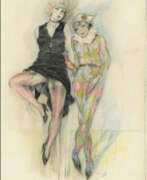

Edouard Chimot was a French Art Deco painter, illustrator and editor.
Edouard studied at the Ecole des Arts Décoratifs in Nice and then at the Ecole des Beaux-Arts in Lille. After the war, he was able to prove himself as an illustrator and master publisher. At the height of the Art Deco heyday, Chimot received a number of commissions to illustrate books with his original engravings, the first of which was the rare book Les Après-Midi de Montmartre with fourteen engravings by Chimot.
In 1920, Édouard Chimot founded his own publishing house, Éditions d'Art Édouard Chimot. Through this venture, he not only continued to create his own art, but also collaborated with other artists and writers to create high quality limited edition books, often with his distinctive illustrations. Édouard Chimot was associated with late Symbolist and decadent culture, and his own work is sometimes referred to as post-Symbolist. His collaborations with famous writers and poets, including Paul Verlaine and Charles Baudelaire, brought his illustrations to the forefront of the Art Nouveau movement.
With the collapse of the financial system in the early 1930s in Europe, the demand for luxury products also fell, but the artist continued to work, produce books and paint. Chimot's artistic style is characterized by sensuality and romanticism. He was an artist of the female figure, style, eroticism and embodied the essence of Art Deco imagery.


Lucien Clergue is a French photographer of black and white photography, the first photographer elected a member of the French Academy of Fine Arts.
Lucien Clergue is one of the most famous photographers in France and founder of the annual Arles Festival, which has become the main event in the world of artistic photography, attended by up to 100,000 people. His famous photographic works - modernist black and white studies of female nudes, harlequins, dead animals, gypsies and bullfighting - are considered exemplary of the photographer-artist. Clergue is also known for his friendship with Pablo Picasso, which lasted some 30 years, until the artist's death.
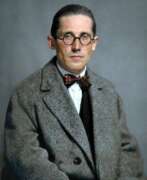

Le Corbusier, born Charles-Édouard Jeanneret in Switzerland, was a visionary French architect, designer, and writer who profoundly influenced modern architecture and urban planning. His innovative ideas blended functionalism with bold sculptural expressionism, embodying the essence of the International Style of architecture. Notably, Le Corbusier's designs, such as the Villa Savoye and the master plan for Chandigarh, India, are celebrated for their revolutionary approaches to living spaces and urban environments.
Le Corbusier's early life in La Chaux-de-Fonds, Switzerland, where he was immersed in the art and craft of watchmaking, significantly shaped his design principles. His architectural journey began without formal training, starting with his education in decorative arts and leading to significant collaborations across Europe. Le Corbusier's philosophy was deeply rooted in the belief that architecture should improve living conditions, particularly in crowded cities. This belief drove his contributions to the Congrès International d'Architecture Moderne and his development of influential architectural principles, such as the Five Points of Architecture, which are exemplified in Villa Savoye.
Villa Savoye, located in Poissy, France, stands as a testament to Le Corbusier's innovative approach, featuring pilotis (reinforced concrete stilts), a functional roof garden, an open floor plan, horizontal windows, and a free façade design. These elements collectively embody his vision of a "machine for living," integrating the house with its environment and the modern lifestyle. Despite facing issues with structural durability and weather resistance, Villa Savoye remains a pivotal work in architectural history, symbolizing the transition to modern architectural thought.
Le Corbusier's legacy is multifaceted, extending beyond architecture to furniture design and painting, showcasing his broad artistic talents. His work continues to inspire and provoke discussion, reflecting both his groundbreaking contributions to modern architecture and the complexities of his ideologies and methodologies.
If you are inspired by Le Corbusier's visionary approach to architecture and design, and wish to stay informed about related updates, consider signing up for our newsletter. This subscription will keep you in the loop about new product launches, sales, and auction events that are directly related to Le Corbusier's enduring legacy. Dive deeper into the world of architecture and design, and ensure you don't miss out on opportunities to engage with Le Corbusier's influential work. Sign up now to connect with the past, present, and future of architectural excellence.
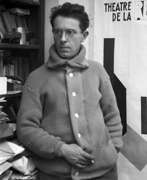

Joseph Csaky, a Hungarian avant-garde artist, sculptor, and graphic artist, is renowned for his pioneering contributions to the Cubist movement. Born in 1888, Csaky's journey into the art world was profoundly influenced by his discovery of Auguste Rodin's work, which paved the way for his mastery in sculptural techniques. His innovative approach is highlighted in his Cubist sculptures, where he skillfully integrated volumetric and spatial relationships, utilizing abstract architectonic forms and drawing inspiration from non-Western art such as Cycladic, Oceanic, and ancient Egyptian art.
Joseph Csaky's commitment to originality is evident in his personal artistic language, which he developed while being part of the vibrant Parisian art scene. His works, such as "Euterpe – Muse of Lyric Poetry" and "Imbrication de cônes," showcase his ability to translate Cubist principles into three-dimensional forms.
Art collectors and experts appreciate Joseph Csaky's contributions to modern sculpture, with his works being sought after in art galleries and auctions. His pieces like "Woman Raising her Hand" and "Figure, dite aussi Femme" not only reflect his artistic prowess but also his influence on subsequent art movements.
For those interested in the fusion of Cubism and sculpture, Joseph Csaky's oeuvre offers a profound insight into the evolution of modern art. To stay updated on new product sales and auction events related to Joseph Csaky, consider signing up for updates. This subscription will keep you informed about the latest developments and opportunities to engage with Csaky's enduring legacy.
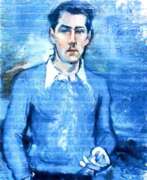

Geoffroy Dauvergne was a French painter and sculptor. He created many wall mosaics and frescoes.
Geoffroy Dauvergne was a figurative painter belonging to the Parisian New School, influenced by Cubism. He is known for his landscapes, portraits and still lifes.
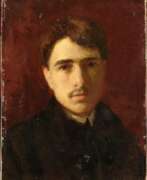

Roger de la Fresnaye was a French painter, a representative of Cubism in painting.
He studied at the Académie Julian in Paris and was fascinated by the art of Paul Cézanne. In his works Fresnaye synthesized lyrical color with geometric simplifications of Cubism.
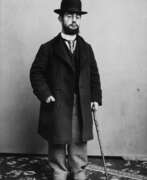

Henri de Toulouse-Lautrec was a distinguished French Post-Impressionist artist, renowned for his deep insights into Parisian nightlife and the world of entertainment in the 1890s. Born into an aristocratic family in Albi, France, Toulouse-Lautrec faced significant health challenges. He suffered from a rare condition, possibly pycnodysostosis, which stunted the growth of his legs following two fractures during his adolescence, leading to a notably short stature as an adult.
Despite his physical limitations, Toulouse-Lautrec immersed himself in art, becoming a key figure in the Post-Impressionist movement alongside artists like Paul Cézanne and Vincent van Gogh. He is particularly celebrated for his vibrant and expressive depictions of the bohemian lifestyle in late 19th-century Paris, often featuring scenes from brothels and nightlife venues. His unique style combined elements of Art Nouveau and lithography, as evidenced in famous works such as "Moulin Rouge: La Goulue" and "At the Moulin Rouge: The Dance".
Toulouse-Lautrec's work offers a window into the Parisian entertainment scene of his time, marked by a vivid use of color and a candid portrayal of his subjects. His ability to capture the essence of Parisian society, from dancers to prostitutes, in an era of great artistic and cultural dynamism, makes his work particularly valuable to art collectors and experts.
For those interested in the art and life of Henri de Toulouse-Lautrec, staying informed about sales and auction events is essential. Sign up for updates to receive the latest news on pieces by Toulouse-Lautrec available for purchase or auction. This subscription focuses exclusively on new product sales and auction events related to Toulouse-Lautrec, ensuring that enthusiasts and collectors don't miss out on any opportunity to acquire pieces from this iconic artist.
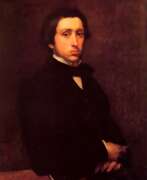

Edgar Degas, a French artist, was a master of painting, sculpture, and drawing, celebrated for his profound influence on the Impressionist movement despite his preference for being called a realist. Degas was born into a well-off family in Paris, France, and demonstrated a keen interest in art from an early age, eventually shaping his path to become one of the most sophisticated draftsmen of his time. His rigorous academic training and close study of classical art initially aimed him towards a career in history painting, but Degas soon pivoted towards contemporary subject matter, thus cementing his role as a classical painter of modern life.
Degas is renowned for his dynamic portrayals of movement, particularly in his depictions of dancers, racehorses, and everyday Parisian life. His works are characterized by their psychological depth and the isolation of his figures, showcasing his unique ability to capture the essence of his subjects with both empathy and critical distance. More than half of his oeuvre focuses on dancers, reflecting not only his fascination with the ballet but also his innovative approach to composition and form. This focus on the human figure, explored in various media including oil, pastel, and sculpture, underscores Degas's commitment to studying the nuances of human movement and expression.
Degas's artistic career is marked by his experimentation with various techniques and materials, as seen in his bronze sculptures and pastel nudes. One of his most famous sculptures, the study of the young ballet student Marie van Goethem, showcases his pioneering use of real objects in sculpture, a practice that prefigured later artistic innovations. Despite the controversies that sometimes surrounded his work, particularly in his depictions of the female nude, Degas's legacy as an artist who bridged the gap between traditional academic art and the modern movements of the early 20th century remains undisputed.
For collectors and experts in art and antiques, Degas's work offers a fascinating study in the evolution of modern art, highlighting the artist's deep engagement with the cultural and social dynamics of his time. His pieces, whether in the form of paintings, sculptures, or prints, continue to captivate audiences with their complexity, beauty, and innovative spirit.
If you are keen to stay updated on sales and auction events related to Edgar Degas, signing up for updates is a prudent choice. This subscription service ensures that you remain informed about new opportunities to acquire works by this pivotal figure in the art world, without overwhelming you with unnecessary information.
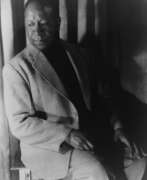

Beauford Delaney was an American modernist painter. He is remembered for his work with the Harlem Renaissance in the 1930s and 1940s, as well as his later works in abstract expressionism following his move to Paris in the 1950s.
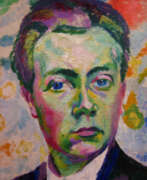

Robert Delaunay, a French artist, emerged as a pivotal figure in the development of early 20th-century art, blending the realms of painting and sculpture with his innovative approaches. His work is celebrated for its dynamic use of color and geometric shapes, making him a cornerstone in the Orphism movement, which he co-founded alongside his wife Sonia Delaunay and others. This movement is distinguished by its focus on vibrant colors and geometric forms, contributing significantly to the abstract art landscape.
Delaunay's artistic journey began earnestly at the age of 19 when he decided to fully dedicate himself to painting, contributing works to the Salon des Indépendants. His early career was marked by a deep engagement with Neo-Impressionism and Cubism, as evidenced by his collaborative work with Jean Metzinger and his exploration of color theory. Notable works from this period include "Paysage au disque" (1906–07) and "Champs de Mars: The Red Tower" (1911), showcasing his departure from representational art towards a more abstract, color-driven aesthetic.
Among Delaunay's celebrated series are the Eiffel Tower and Simultaneous Windows, reflecting his fascination with Parisian architecture and the dynamic interplay of light and color. These works, along with others like "L'Équipe de Cardiff" (1912-13) and "Endless Rhythm" (1934), are housed in prestigious museums such as the Musée d'Art Moderne de la Ville de Paris, The Solomon R. Guggenheim Museum, and the Tate collection. These pieces illustrate his evolving style, from the depiction of movement and technology in pre-war Paris to the rhythmic abstraction of later years.
Delaunay's influence extended beyond France, with significant contributions to exhibitions in Germany, Switzerland, and Russia, particularly through his involvement with Der Blaue Reiter group. His work not only captured the essence of the technological and cultural shifts of his time but also laid the groundwork for future artistic explorations into color and form.
For collectors and experts in art and antiques, Delaunay's oeuvre offers a rich study in the evolution of modern art, from its roots in Cubism and Neo-Impressionism to the heights of abstract expression. His works serve as a testament to the power of color and shape in conveying emotion and motion, making them invaluable to the understanding of 20th-century art history.
To stay informed on new sales, auctions, and exhibitions related to Robert Delaunay, sign up for updates. This subscription ensures you remain updated on opportunities to engage with Delaunay's influential body of work, reflecting the ongoing interest in his contributions to modern art.


Maurice Denis, a French painter and writer, was an influential figure in the transition from impressionism to modern art. Born on November 25, 1870, in Granville, France, Denis's artistic journey began at the Académie Julian in Paris. Here, he met future collaborators like Paul Sérusier and Pierre Bonnard, with whom he later formed the Nabis group, a collective deriving its name from the Hebrew word "Nabi," meaning "Prophet".
Denis's style evolved from neoimpressionism, influenced by artists like Seurat, to a more decorative and colorful approach under the influence of Gauguin. This shift is evident in works like "Taches du soleil sur la terrace" (1890). He famously stated, "Art is no longer a visual sensation... it is a creation of our spirit," highlighting his belief in art as an idealistic expression, transcending mere imitation of nature.
Denis was also impacted by Japanese art, which influenced his compositions and styles, contributing to his unique and recognizable approach. His philosophy on art, encapsulated in his 1890 essay published in "Art et Critique," emphasized the importance of color and form in creating emotional depth, a notion that laid the groundwork for modernism. He argued that a painting's essence lies in its colors and composition, rather than its subject matter.
Throughout his career, Denis's work evolved towards a more classical approach. His involvement with the Ateliers d'Art Sacré, founded in 1919, demonstrated his interest in religious art and decoration. His notable works include "The Legend of Saint Hubert" (1897) and "The History of Music" for the Théâtre des Champs Elysées (1912-1913).
Tragically, Maurice Denis's life ended on November 13, 1943, when he was struck by a truck during the German occupation of Paris. However, his legacy endures through his contributions to modern art and symbolism, his influence on fellow artists, and his works displayed in various museums and galleries.
For collectors and art experts, Denis's work offers a unique glimpse into the evolution of modern art. His blend of symbolism, color, and form marks a significant shift in art history. To stay updated on new sales and auction events related to Maurice Denis's work, sign up for our newsletter. This subscription will keep you informed about the latest developments in the world of this remarkable artist.
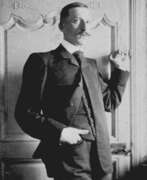

André Derain was a French artist, renowned as a painter, sculptor, and a pivotal figure in the development of Fauvism alongside Henri Matisse. Born on June 10, 1880, in Chatou, Yvelines, just outside Paris, Derain's artistic journey began in his youth. Despite initially studying to become an engineer, his passion for art led him to the Académie Julian and to acquaintances with notable artists like Matisse and Maurice de Vlaminck.
Derain's work, especially his paintings, is celebrated for its vibrant, expressive use of color and innovative compositions. His contributions to Fauvism, a movement characterized by the use of bold, non-naturalistic colors, marked a significant shift in the art world. The Fauvist period, particularly his collaboration with Matisse in the summer of 1905 in Collioure, culminated in works that were distinguished by their startling hues and wild brushwork, earning them the nickname "the wild beasts" or "les Fauves."
A notable period in Derain's career was his time in London in 1906, commissioned by art dealer Ambroise Vollard. His London series, including views of the Thames and Tower Bridge, are celebrated for their unique perspective and use of color, differing significantly from the traditional depictions of the city by artists like Whistler or Monet. These works stand out for their Pointillist influence and the effective conveyance of light and movement.
Derain's artistic evolution continued as he experimented with Cubism and was influenced by African art, as seen in his primitivist woodcuts for Guillaume Apollinaire's book "L'enchanteur pourrissant" (1909). His career, however, was not without controversy, particularly during World War II, when he was perceived as a collaborator due to his interactions with the Germans.
Despite the challenges and transformations in his career, André Derain left an indelible mark on the art world. His works are held in prestigious collections worldwide, including the Musée Cantini in Marseille and the Musée d'art moderne de Troyes. Derain's contribution to modern art, particularly through Fauvism, remains a subject of admiration and study among art collectors and experts.
If you're captivated by the artistic journey and pioneering spirit of André Derain, don't miss the opportunity to stay updated on his legacy. Sign up now to receive exclusive alerts on new product sales and auction events related to André Derain's work. Embrace your passion for art and culture, and ensure you're always informed about the latest offerings and unique pieces linked to this iconic artist.
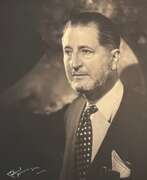

Jean-Gabriel Domergue was a distinguished French painter, renowned for his portraits of Parisian women. His education at the École nationale supérieure des Beaux-Arts laid the foundation for his artistic journey. In 1911, Domergue's talents were recognized with the prestigious Prix de Rome, marking a significant milestone in his career.
Jean-Gabriel Domergue's artistic evolution, especially from the 1920s, was characterized by a focus on portraying the "Parisian lady." He claimed to be "the inventor of the pin-up" and is known for creating a new archetype of woman in his paintings: slender, elegant, with a swanlike neck and wide, longing eyes. This signature style saw him paint approximately 3,000 portraits, including prominent figures such as Liane de Pougy and Nadine, the future Baroness of Rothschild.
Beyond painting, Jean-Gabriel Domergue's influence extended to fashion. He collaborated with notable couturiers like Paul Poiret and Henry Marque, designing dresses, hats, and accessories. His role in shaping the fashion of his era was significant, reflecting his deep understanding of elegance and style.
Later in his life, Domergue also served as the curator of the Jacquemart-André Museum in Paris from 1955 until his passing in 1962. His tenure saw remarkable exhibitions featuring the works of Van Gogh, Toulouse-Lautrec, Goya, and others, including a tribute to his own master, Giovanni Boldini. Jean-Gabriel Domergue's contributions to art and culture earned him accolades, including being made a Knight of the Legion of Honour and a Fellow of the Academy of Fine Arts.
A notable aspect of Jean-Gabriel Domergue's legacy is the Villa Domergue in Cannes, a historic mansion he built. This villa was turned into a museum in his honor from 1962 to 1973 and is currently used as an official venue by the city of Cannes. It is recognized as an official historical monument and plays a role during the Cannes Film Festival.
For collectors and experts in art and antiques, Jean-Gabriel Domergue's work represents a unique blend of classic beauty and modern elegance. His paintings offer a window into the Parisian high society of the early 20th century and continue to be a source of inspiration and fascination. To stay informed about sales, auction events, and updates related to Jean-Gabriel Domergue, consider signing up for updates. This ensures access to the latest opportunities to engage with and appreciate the work of this influential French artist.


Raoul Dufy, a renowned French artist, is celebrated for his vibrant and decorative style, which left a significant mark in the realms of Fauvism and Post-Impressionism. Born in 1877 in Le Havre, France, Dufy's artistic journey was profoundly influenced by Henri Matisse's Fauvist work "Luxe, Calme et Volupté," which he encountered at the Salon des Indépendants in 1905. This experience steered him towards Fauvism, a style that emphasized bold contours and bright colors.
Dufy's artistic evolution saw him briefly embrace Cubism around 1920, after which he developed a unique approach. This approach, often referred to as stenographic, was characterized by skeletal structures, foreshortened perspectives, and the use of thin, quickly applied washes of color. His works, known for their cheerful and fashionably decorative nature, often depicted scenes of leisure like yachting, the French Riviera, and chic parties, capturing the essence of the period's optimism.
In addition to his painting, Dufy was also a commercial artist, illustrator, and designer, contributing significantly to textile design and public murals. His large-scale public art commissions combined modern and allegorical subjects with exuberant outlines and intense colors, showcasing a modernist take on traditional mural work. Notable works by Dufy include "The Regatta," "The Harvester," and the monumental "The Electricity Fairy," a large mural commissioned for the 1937 World's Fair in Paris.
His works are housed in prestigious public collections worldwide, including the Art Institute of Chicago, the Musée d'Art Moderne de Paris, and the National Gallery of Art in Washington, D.C. Despite his artistic achievements, Dufy's focus on decorative art and the lack of engagement with wider social concerns has led to a varied critical reception of his work. Nonetheless, his contribution to 20th-century art, particularly in popularizing a vibrant and illustrative style, remains undisputed.
If Raoul Dufy's artistry captivates you and you wish to stay informed about the latest artworks, exhibitions, and auction events related to this remarkable artist, we invite you to sign up for our updates. By subscribing, you'll receive timely notifications about new pieces for sale and upcoming auctions. This is a wonderful opportunity for collectors and art enthusiasts to enhance their appreciation and possibly their collections of Dufy's work. Stay connected with the world of art and don't miss any chance to acquire unique pieces by this celebrated artist.


Jean Dufy was a French painter of the late 19th century and the first half of the 20th century. He is known as a painter and designer who worked in various styles, including Cubism and Fauvism. Contemporaries appreciated Dufy's talent as a colorist who constantly experimented with colors, finding inspiration, in particular, in jazz music.
Jean Dufy preferred to depict life in Paris in his oil and watercolor paintings. One of his favorite subjects was the spectacle, especially the circus. Dufy was also in demand as a designer. For 30 years he designed porcelain and in 1925 at the International Exhibition of Decorative Arts, Dufy was awarded the gold medal for his design of the porcelain service Chateaux of France. Jean Dufy also helped his brother Raoul Dufy create a 600 square meter fresco for the Electricity Pavilion at the 1937 World Fair in Paris.
Jean Dufy's work was exhibited in prestigious museums and galleries throughout his career. Today his paintings are in the public collections of the Museum of Modern Art in New York, the Pompidou Center in Paris, the Albertina Gallery in Vienna and other world art centers.
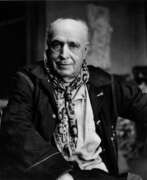

André Albert Marie Dunoyer de Segonzac was a French painter, graphic artist and illustrator known for his contribution to the Post-Impressionist and Fauvist movements.
Dunoyer de Segonzac's style was defined by his bold use of colour, his expressive brushwork, and his desire to capture the essence of the subject. In his work, he explored a variety of subjects, including landscapes, still lifes and scenes of everyday life. His paintings often displayed a sense of vitality and energy, with vibrant hues and dynamic compositions. The master often used intense hues to evoke an emotional response. His palette was characterised by a bold and expressive use of colour, giving his works a sense of vibrancy and dynamism.
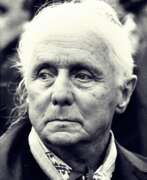

Max Ernst was a pivotal figure in the 20th-century art world, whose work transcended the boundaries of nationality and genre to leave an indelible mark on culture, art, sculpture, and painting. Born in Germany on April 2, 1891, and later becoming a naturalized American and French citizen, Ernst's career was a testament to his relentless innovation and creativity. Known primarily as an artist and painter, Ernst was a founding member of the Dada movement in Cologne before becoming a major proponent of Surrealism in Paris. His early encounters with the works of Pablo Picasso, Vincent van Gogh, and Paul Gauguin at the Sonderbund exhibition in 1912 deeply influenced his artistic direction, infusing it with elements of Cubism and Expressionism. Despite his lack of formal artistic training, Ernst's experimentation with techniques such as collage and frottage showcased his unique ability to blend the absurd with the sublime, making him a central figure in the artistic avant-garde of his time.
Ernst's work is notable for its exploration of the unconscious, using dreamlike imagery and symbolic figures to critique societal norms and delve into the chaos of the human psyche. His experiences in World War I profoundly impacted his worldview, leading to a deep skepticism of Western culture and an enduring search for meaning through art. This is evident in works such as "Europe After the Rain II," which reflects the devastation of war and "The Fireside Angel," inspired by the political turmoil of the Spanish Civil War, showcasing his ability to address contemporary issues through a surreal lens.
Ernst's contributions to art are preserved in major museums and galleries worldwide, including the Tate in the United Kingdom and the Museum of Modern Art in New York. His sculptures, paintings, and collages continue to be celebrated for their innovative techniques and imaginative scope, marking him as a revolutionary figure in modern art. Among his most significant works are "Ubu Imperator," "The Elephant Celebes," and "The Virgin Spanking the Christ Child before Three Witnesses," each reflecting his mastery over a diversity of mediums and themes.
For collectors and experts in art and antiques, Max Ernst remains a symbol of artistic freedom and exploration. His ability to navigate through various artistic movements while maintaining a distinct, innovative voice is a testament to his enduring legacy in the art world. To stay updated on new product sales and auction events related to Max Ernst, signing up for updates is a valuable opportunity for those deeply invested in the nuances of modern and surreal art.


Roman Petrovich Tirtoff, pseudonym Erté, was a Russian-born artist, graphic artist, illustrator, stage designer, fashion designer and sculptor of the Art Deco era who worked in Paris and Hollywood. His pseudonym, which he took "so as not to disgrace his family", was made up of the first letters of his first and last name.
Herthe is best known for his elegant fashion illustrations, costume designs and set designs for the theatre.
Erte's work was not limited to the realm of fashion and theatre. He created jewellery, perfume bottles, furniture and furnishings, infusing them with his unique sense of style and elegance. His work often utilised elements of Egyptian, Byzantine and Oriental art, combining historical traditions with contemporary aesthetics
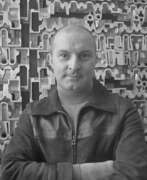

Armand Pierre Fernandez, widely known by his mononym Arman, was a French-born American artist celebrated for his innovative contributions to the Nouveau Réalisme movement and his radical use of everyday objects in art. Born in Nice, France, on November 17, 1928, Arman's early exposure to art came from his father, an antiques dealer and amateur artist, which deeply influenced his later artistic endeavors.
Arman moved beyond traditional painting techniques early in his career, instead creating his signature "Accumulations" and "Poubelles" (trash) sculptures. These works involved assembling and compacting everyday items like watches, clocks, and even automobiles, embedding these objects in layers of concrete or encasing them in Plexiglas. One of his most notable large-scale works is "Long Term Parking," a 60-foot high sculpture made of concrete-encased cars, situated in Jouy-en-Josas, France.
His work is an essential bridge between European and American trends in Pop art and has been widely exhibited in major institutions like the Metropolitan Museum of Art in New York, the Tate Gallery in London, and the Centre Pompidou in Paris. Arman's innovative techniques and philosophical approach to materials challenged conventional categorizations of art and inspired future generations of artists.
For collectors and enthusiasts interested in staying updated on exhibitions and sales related to Arman's work, signing up for updates can provide essential insights and opportunities related to this influential artist. Join our community to ensure you don't miss out on new discoveries and auction events associated with Arman's legacy.
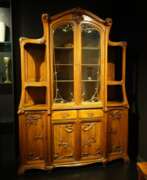

Eugène Gaillard was a French art nouveau industrial designer, architect and advocate of modern design. Gaillard abandoned a career in law for that of interior design and decoration. He was employed for some time by Siegfried Bing along with Georges de Feure and Edouard Colonna to work on his pavilion at the 1900 Paris Universal Exposition.


Adrien Étienne Gaudez was a 19th century French sculptor. He studied sculpture under François Joffroy at the Ecole des Beaux-Arts in Paris.
Adrien Étienne Gaudez is known for his monumental figures cast in bronze.
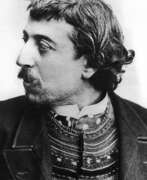

Paul Gauguin, a French artist born in Paris in 1848, is renowned for his significant contributions to Post-Impressionism, Primitivism, and Synthetism. Gauguin's art is distinguished by his experimental use of color and style, which set him apart from the traditional Impressionist movement.
Gauguin's early life was marked by a period in Peru, which influenced his artistic perspective. Initially, he pursued a career in stockbroking but soon turned to art, driven by financial necessity and a growing passion. His artistic journey began under the mentorship of Impressionist artist Camille Pissarro and through exposure to the works of other avant-garde artists.
The hallmark of Gauguin's work is his exploration of non-Western cultures, particularly during his time in Tahiti and the Marquesas Islands. This period saw the creation of some of his most famous works, including "Where Do We Come From? What Are We? Where Are We Going?" His paintings from this era, characterized by vivid colors and Symbolist themes, reflect a fusion of cultural influences and his quest for a "primitive" expression of spiritual and emotional states.
Despite his innovative style, Gauguin struggled with financial difficulties and health issues throughout his life. His work received little recognition during his lifetime, but posthumously, he gained acclaim for influencing modern artists like Pablo Picasso and Henri Matisse.
Today, Gauguin's works are celebrated in galleries and museums worldwide for their unique blend of cultural influences and artistic innovation. His enduring legacy is a testament to his unique vision and the profound impact he had on the art world.
Collectors and experts in art and antiques, stay updated on new product sales and auction events related to Paul Gauguin. Sign up now for exclusive updates and immerse yourself in the world of this visionary artist.


Ida Gerhardi was a German artist of the late nineteenth and early twentieth centuries. She is known as a painter, representative of classical modernism.
Ida Gerhardi at the beginning of her career worked mainly in the genre of landscape, was an adherent of the Barbizon school of painting. Later she began to specialize in portraits, then switched to marine subjects, and in the last years of her life she created still lifes and genre paintings. Beginning in 1900, she was strongly influenced by the Post-Impressionists and Fauvists, and from 1911 by Rhenish Expressionism.
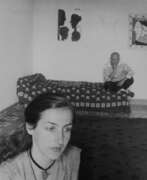

Françoise Gilot is a French painter, illustrator, and writer. She has published several books, including a memoir about her life with Pablo Picasso.
Gilot studied at the Sorbonne in Paris and later at the École des Beaux-Arts in Fontainebleau. She began exhibiting her work in the 1940s and quickly gained recognition for her colorful and vibrant paintings. Gilot's early work was influenced by the cubist and surrealist movements, but she developed her own unique style over time, characterized by bold colors and strong lines.
Gilot is also known for her personal life, particularly her relationship with Pablo Picasso, with whom she had two children. She wrote a memoir, "Life with Picasso," which was published in 1964 and became a bestseller. The book provided insight into Picasso's personality and working methods, as well as the challenges of being an artist in the mid-20th century.
Gilot has continued to paint throughout her life and has exhibited her work in galleries and museums around the world. She has also been recognized with numerous awards and honors, including being named a Chevalier de la Légion d'Honneur in 1990. Her work continues to be celebrated for its bold and expressive style, as well as for the way it reflects her experiences and insights as a woman and an artist.
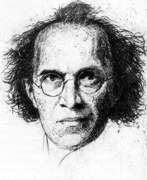

Heinrich Gottselig was a German painter of the first third of the twentieth century of Jewish origin who worked in Germany, France and Russia. He is known as a portrait and landscape painter, impressionist and modernist, and is considered one of the best representatives of the Frankfurt school of landscape and portrait painting.
Gottselig gained recognition at the age of 23 with debut works including portraits and landscapes. In 1913, he was recognized as one of the best representatives of his painting school. In addition to painting, the artist also practiced copper engraving.
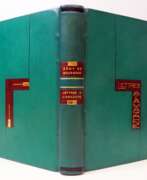

Madeleine Gras, full name Louise Augustine Madeleine Gras, was a French bookbinder and designer.
Madeleine Gras studied at the Central Union of Decorative Arts and also apprenticed with Henri Nulhac. She designed Art Deco bindings and first appeared in 1922 at the Salon of the National Society of Fine Arts.


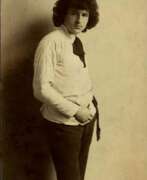

Nikolai Mikhailovich Gushchin (Russian: Николай Михайлович Гущин) was a Russian and Soviet artist, celebrated for his portraits, landscapes, and still lifes. His journey through art and life spanned continents and eras, marked by both acclaim and adversity. Gushchin's formative years were enriched by academic training, leading to early works that showcased his talent through pencil drawings like "Portrait of mother" and "portrait of a nephew of Victor". His evolution as an artist is noted for a transition from Impressionism to incorporating elements of Cubism and Futurism, demonstrating a vibrant exploration of modern art movements.
Gushchin's career took a pivotal turn during his years in exile from 1919 to 1947, a period that saw him achieve recognition across Europe. He became a member of the expert council of the Louvre, and his works were acquired by museums in Paris, Grenoble, Monte Carlo, and Nice. His style during these years melded Art Nouveau, Symbolism, Expressionism, and Fauvism into a distinctive mode of expression. Despite his success abroad, Gushchin's return to the Soviet Union in 1947 brought challenges, including the ideological ostracism that limited his opportunities to teach and exhibit his work.
Gushchin's legacy includes a significant body of work that remains influential. His paintings and drawings, characterized by expressive color and dynamic compositions, are held in high regard both in Russia and internationally. The Radishchev Museum boasts the largest collection of his works, illustrating the breadth of his talent and the diversity of his subjects.
For collectors and experts in art and antiques, Gushchin's oeuvre offers a fascinating glimpse into the intersection of individual creativity and historical tumult. His works not only embody the stylistic shifts of the 20th century but also reflect the personal resilience and artistic integrity of their creator.
To stay informed about sales and auction events featuring Nikolai Mikhailovich Gushchin's work, sign up for updates. This subscription will ensure you're the first to know about opportunities to acquire pieces by this remarkable artist.


Paul César Helleu was a French oil painter, pastel artist, drypoint etcher, and designer, best known for his numerous portraits of beautiful society women of the Belle Époque. He also conceived the ceiling mural of night sky constellations for Grand Central Terminal in New York City. He was also the father of Jean Helleu and the grandfather of Jacques Helleu, both artistic directors for Parfums Chanel.


Auguste Herbin was a French painter, celebrated for his contributions to modern art, particularly within the realms of Cubism and abstract painting. Born on April 29, 1882, in Quiévy, Nord, France, Herbin's artistic journey took a significant turn after he moved to Paris in 1903. Initially influenced by Impressionism and Post-Impressionism, his style evolved significantly after 1909 when he became acquainted with Cubism, a movement that significantly influenced his work thereafter. By 1917, Herbin was fully immersed in creating abstract compositions, pioneering a unique blend of geometric abstraction that became his signature style. His abstract work, characterized by simple geometric shapes and vivid, unmodulated colors, adhered to a personal theory of art he detailed in his 1949 book, "L'Art non-figuratif, non-objectif".
Herbin's influence extended beyond his paintings; he was a co-founder of the groups Abstraction-Création and Salon des Réalités Nouvelles, advocating for non-figurative abstract art. Despite facing a significant challenge in 1953, when he became paralyzed on the right side and had to adapt by painting with his left hand, Herbin continued to create art until his passing on January 31, 1960, in Paris. His unfinished work, themed around the word "Fin," marks the poignant end of his prolific career.
Today, Herbin's works are housed in prestigious public collections worldwide, including the Museum de Fundatie in Zwolle, The Netherlands; Kröller-Müller Museum in Otterlo, The Netherlands; National Galleries of Scotland; Matisse Museum in Le Cateau-Cambrésis, France; and the KUNSTEN Museum of Modern Art Aalborg in Denmark, among others. These institutions celebrate Herbin's legacy, showcasing his innovative approach to abstract art that continues to inspire artists and collectors alike.
For enthusiasts and collectors interested in modern art and the evolution of abstract painting, Auguste Herbin's works offer a rich exploration of geometric abstraction and its theoretical underpinnings. Sign up for updates on new product sales and auction events related to Auguste Herbin, and delve deeper into the vibrant world of one of France's pioneering abstract artists.
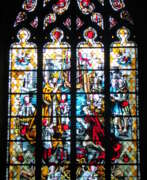

Maurice Max Ingrand, better known as Max Ingrand was a French artist and decorator, known for his work in studio glass and his stained glass windows.
Ingrand created numerous church stained glass windows during the late 1940s to 1960s. In the aftermath of World War II, he was tasked with replacing 47 of the stained glass windows destroyed at Notre-Dame de Paris.
Max Ingrand was noted for his modern designs.
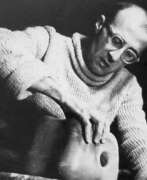

Georges Jouve was an important ceramist of the 20th century. At 17 years old, Jouve enrolled at the prestigious Ecole Boulle in Paris where he received theoretical instruction in Art History in addition to his technical studies as a sculptor. After Graduation in 1930 he first embarked on his artistic career as a theatrical set designer. During World War II, Jouve was captured by the Germans and interned in a German camp. After several attempts he escaped from the camp and took refuge at his step parents home in a potters village in the South of France called Dieulefit. In 1944, Jouve and his family moved back to Paris. He opened his studio in Paris and was invited by Jacques Adnet to participate in the exhibition “La Ceramique Contemporaine” by the Compagnie des Arts Francais. He then participated annually in numerous 'Salons' in France and internationally such as the “Salon des Artistes Decorateurs” in Paris, Association Francaise d'Action Artistique in Rio de Janeiro, and Vienna, Toronto, Rome, Milan, and Cairo.
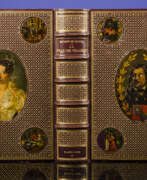

René Kieffer was a French bookbinder, publisher and bookseller.
A pupil of Henri Marius Michel, he worked for ten years as a gilder at the Chambolle-Douroux bookbinding factory. In 1903 René Kieffer opened his studio in Paris, and in the same year his work was first shown at the Salon de la Société des Artistes-Decorators.
Over time, his work shifted from classical forms to Art Nouveau motifs. René Kieffer was known for using bright colors in elaborate designs, creating luxurious bindings for unique publications. Between 1917 and 1923, he created Pierre Legrain's designs for Jacques Doucet's library. As a bookbinder and publisher, René Kieffer was vice-president of the book department of the 1925 Paris International Exhibition of Decorative Arts and Modern Industry. He also participated in the International Exhibition of Arts and Technology in Modern Life in Paris in 1937.
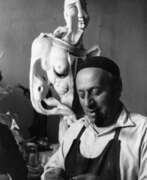

Yervand Kochar (Russian: Ерванд Семёнович Кочар) was an Armenian sculptor and modern artist, renowned for his groundbreaking contributions to the 20th-century art world, particularly as a pioneer of the Painting in Space art movement. Born in Tbilisi, Georgia, in 1899, Kochar's artistic journey led him from his native land to Paris, where his innovative works earned him critical acclaim and a place alongside other avant-garde artists. His creations, characterized by a dynamic blend of sculpture and painting, sought to introduce time as a fourth dimension to art, presenting a novel way of perceiving artistic expressions.
Kochar's most celebrated works, such as the statues of David of Sassoun and Vardan Mamikonian, have become emblematic of Armenian heritage, symbolizing the enduring spirit and cultural richness of Armenia. His masterpiece in painting, "Disasters of War," alongside other significant works, underscores his versatility and mastery over different mediums. The Yervand Kochar Museum in Yerevan, Armenia, serves as a testament to his enduring legacy, housing a vast collection of his works and offering insights into his artistic evolution and the profound impact of his contributions to modern art.
For art collectors and experts, Kochar's work represents not only a pivotal moment in the history of modern art but also an opportunity to engage with the rich tapestry of Armenian cultural identity. His innovative approach to form, space, and time continues to inspire new generations of artists and art aficionados worldwide.
To stay updated on exhibitions and auctions featuring Yervand Kochar's works, sign up for updates. By subscribing, you'll receive alerts on new sales and auction events related to Kochar's art, ensuring you never miss an opportunity to engage with the legacy of this remarkable artist.
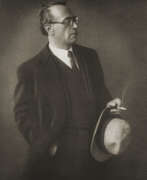

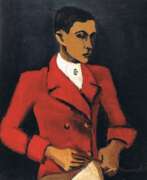

Helmut Kolle, pseudonym Helmut von Hügel, was a German artist. He was known for his modernist paintings, which often depicted urban landscapes, still-life scenes, and portraits.
Kolle's paintings are characterized by their precise, geometric forms and bold, bright colors. He often depicted urban scenes, such as factories and train stations, as well as still-life compositions that featured everyday objects. His portraits were also notable for their use of simplified forms and bright colors, which gave them a distinctly modernist feel.
Kolle's work was exhibited extensively during his lifetime, including at the Berlin Secession and the Great Berlin Art Exhibition. Despite his short career, he was recognized as an important figure in the development of modernist painting in Germany.
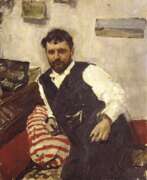

Konstantin Alekseyevich Korovin (Russian: Константи́н Алексе́евич Коро́вин) was a Russian artist and stage designer, renowned for his pivotal role in the transition from Russian Realism to Impressionism. Born in Moscow in 1861, Korovin's artistic journey began at the Moscow School of Painting, Sculpture, and Architecture, where he was heavily influenced by his mentor, Alexei Savrasov. His early work reflected the Realist tradition, but his style evolved after exposure to the vibrant art scenes of Paris and the influence of French Impressionists.
Korovin's contribution to art is marked by his vibrant palette and dynamic brushwork, capturing the transient effects of light and color with a spontaneity that was novel to Russian painting at the time. His works, ranging from lush landscapes and intimate still lifes to vivid portraits, showcase his mastery in evoking mood and atmosphere. Notably, his paintings of the Russian North and scenes of Parisian life have been celebrated for their lively, atmospheric qualities and are held in high esteem in museums and galleries worldwide, including the Tretyakov Gallery in Moscow and the Russian Museum in Saint Petersburg.
Beyond painting, Korovin's legacy includes significant contributions to theater design, where his innovative use of color and lighting brought new dimensions to stage productions in Russia, collaborating closely with the Moscow Art Theatre. His scenic designs for operas and ballets are credited with revolutionizing the visual aspect of Russian theater, making him a pivotal figure in both the visual and performing arts.
For collectors and experts in art and antiques, Korovin's works represent a unique blend of Russian tradition and Western artistic movements, making them highly sought after. His ability to capture the essence of a moment, whether in the tranquil Russian countryside or the bustling streets of Paris, continues to captivate audiences and scholars alike.
To stay informed on new sales and auction events featuring works by Konstantin Alekseyevich Korovin, sign up for our updates. This subscription ensures you're the first to know about valuable opportunities to add to your collection, focusing exclusively on Korovin's art and related events.


Fernand Lantoine is a French painter and draughtsman, often associated with the Belgian School.
Without adhering to all the artistic innovations of his time, he constantly developed his painting technique.
This evolution is related to the deep need for renewal in European societies, highly civilised and industrialised but scarred by the horrors of war.
A close friend of Paul Signac, he moved from the neo-impressionist movement with divided brushstrokes and bright, almost fauvist tones, to a symbolist inspiration close to Henri Martin, before opting for a style marked by the pre-eminence of line and structure over colour.


François-Raoul Larche was a French Art Nouveau sculptor whose work included several figures of Christ, but who may be better known for his numerous female figures, both nude and draped.
He was one of several artists inspired by the dancer Loie Fuller; one of his best-known statues depicts Fuller dancing with part of her drapery billowing above and behind her head like a flame.




